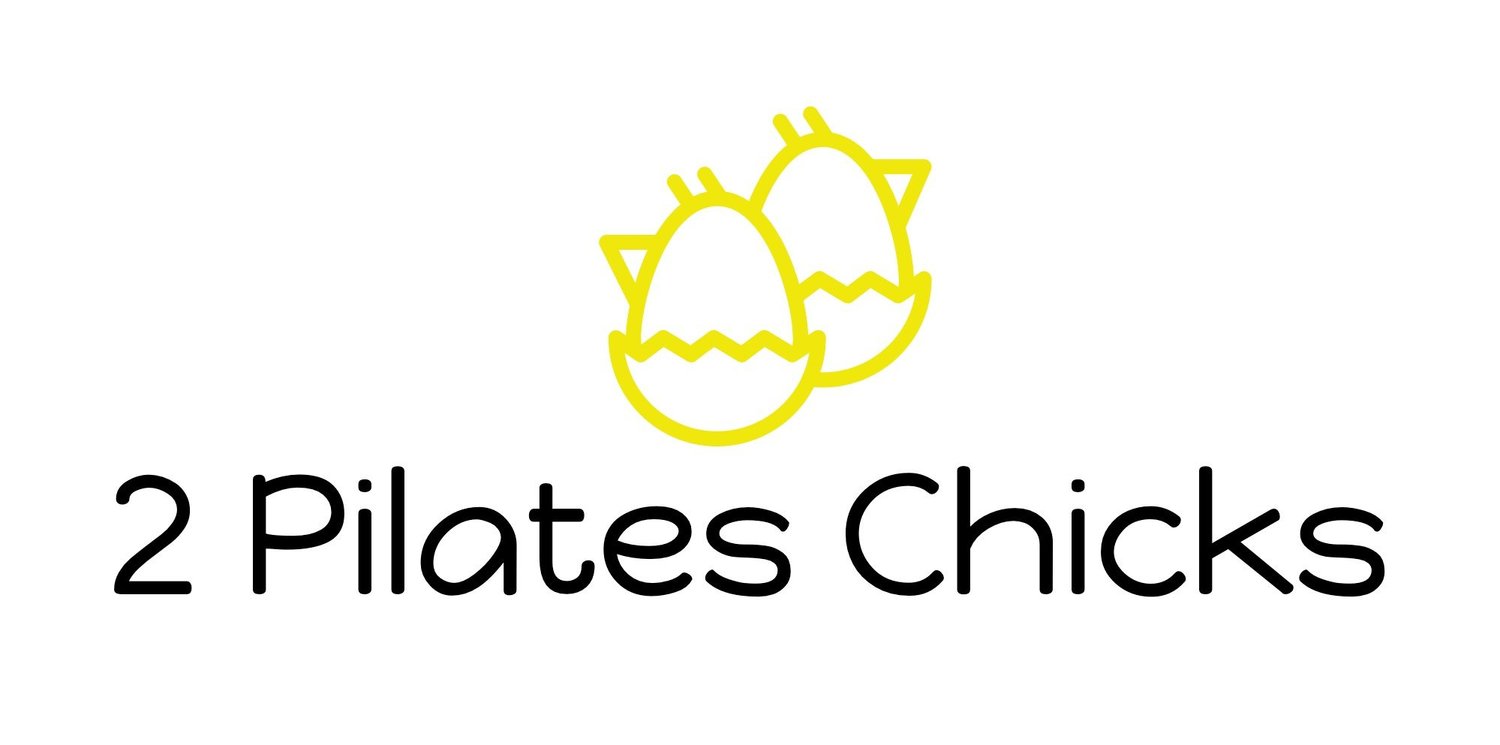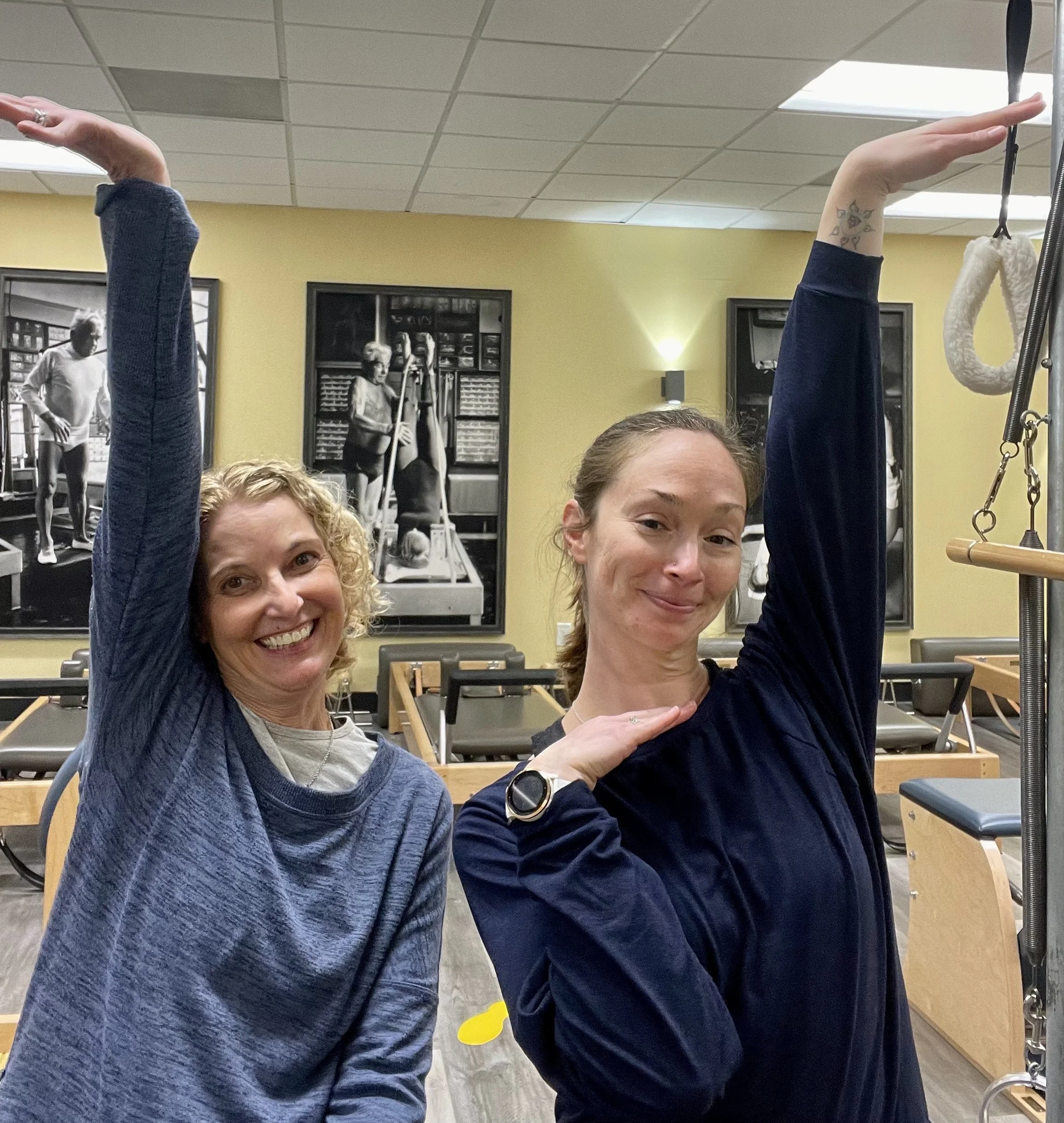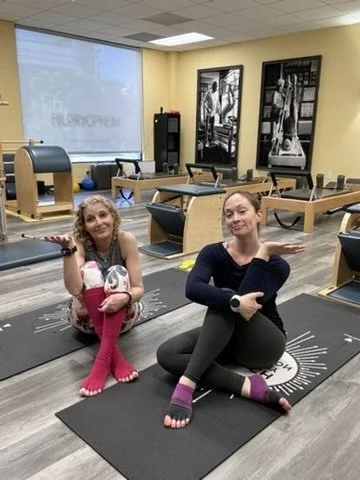Planning your Pilates clients session
How do we go about planning a Pilates session for a client? What is the difference in session planning for a client who is completely new to Pilates, versus a client who has done Pilates before, but is going to a new teacher? Or what about planning for the client who has been doing Pilates with the same teacher for a long time?
It is common for teachers to feel worried about session planning, wanting it to be appropriate for the client, and keeping them inspired, excited, and moving. We discuss this in Season 5 Episode 10 "Building a Client's Session", going over tools of teaching skills, teaching to the body in front of you, and various ways to think about planning sessions.
There are many approaches to building a plan for a client in a private session. The overall goal for every session is to provide an effective and safe workout while keeping the client moving and engaged, continuing to be challenged and developing. Each client we see in a day may need different things, and a client may need different things each day we see them. Regardless of the style of Pilates we teach, we must provide an appropriate and safe session.
The Client who is new to Pilates:
For a new client, we must always start with a client intake to know previous and current injury history, goals, and exercise history to know where to begin with a client. If this client has never done Pilates before, the teacher must also recognize the client will not look "perfect" when attempting the choreography and exercises. They do not have to look a certain way at first, or ever. The goal of the first session is for the teacher to get to know the client, and for the client to get comfortable with the teacher and the movement approach and apparatus. As the new client continues, the teacher needs to create space in the sessions to let the client move, breathe, and feel the movement for themselves, not focusing on too many corrections, but getting familiar with how this client responds to cues and how their body moves. Expect Pilates with a first-time client to be messy, and plan the sessions around just getting them moving and feeling the springs, trying things out, and seeing what they can do.
For a session with a first-time client, we want to create an environment in the studio that is supportive, where they feel comfortable trying something new, exploring and experiencing the work, and where it feels safe to make mistakes to learn. The teacher's goal in these sessions is to guide the client to find the proper set-up positions, to begin familiarizing them with the movement, and to build their confidence to experience and try Pilates to be able to continue building the foundational Pilates work to develop their practice.
The Client who is new to a Teacher:
For a client who is new to a teacher but has done Pilates before, the initial session still requires the intake period to allow the client and teacher to become acquainted, but this also might include asking questions about where the client has previously practiced, the styles of Pilates and apparatus they are used to, how long it has been since doing Pilates, why they wanted to switch teachers or studios, and how long they have practiced. This helps the teacher understand what the client is familiar with, how comfortable they are adapting to different approaches, and how our styles might differ.
With this client even though they might be quite familiar with Pilates, the client and teacher are still getting to know each other, and their styles might differ, so the initial sessions should still focus on getting to understand how the client moves. This entails planning the sessions with lots of movement, fewer corrections and cueing, and watching the body and what it needs. As with any client, the teacher needs to tailor the exercises to the client's abilities, so we can add more advanced movements or move into more foundational work depending on what the teacher notices as the client moves.
The Long-time Client:
With a client who has been with a teacher for a long time, there is often a concern that the client will get bored, that they're not being entertained enough, and that we have to find new, flashy, and exciting exercises to keep them interested in coming to sessions. Sessions with a long-time client should also focus on what a client needs each session. It's not about the teacher wanting to show everything they know with fancy exercises, but rather about how the client comes into the studio each day. With clients we've worked with for a long time and are familiar with, we can tell when they might need something different. We can ask them how they're feeling that day, or if they mention something specific like not sleeping well the night before or dealing with work stress, we can ask what they might feel they need that day. Even with the client we are familiar with, session planning is still about what the client needs, not about trying to keep them entertained.
In any practice, we need repetition. Repetition helps learning, and muscle memory, and develops a deeper understanding of the work. Clients are coming in for sessions generally one or two times each week. They are not getting bored. So instead of focusing on how to plan sessions to be exciting, the long-time client still needs repetition and development as well. There can be variations, modifications, and adaptations within the repetition, but repetition is ok as it builds the connections in the body. As the client becomes more familiar with the work we can add new layers of cueing, corrections, or choreography. We can build off something they've done before so it's familiar to them, building off the muscle memory. Similarly, doing the same or a similar movement on a different piece of apparatus can add variability with repetition to develop, adding in the layers of similar but different exercises.
For any client, planning a Pilates session is always about the specific goals of the client, their needs, their injury and movement history, and how they seem that day in the studio. We need to adjust to the daily stressors clients come into the studio with each day. One session they may need more focus to clear their mind and forget other issues they're dealing with, so vigorous exercises and advanced movements will be beneficial to destress and force their mind to focus on the moment. Other times they may be exhausted from life stuff and need to gently move the whole body and not overexert, where they need to focus on slowing things down, breathing, and flowing.
In the planning of sessions, Pilates teachers tend to forget that each session is about listening to the clients and watching them. We get wrapped up in proving we're inspired, interesting, and fun teachers. It's never about what the teacher wants the client to do, but about what the client wants and needs, always building off the foundations we've built in previous sessions, so they understand the system and the concepts in Pilates movement theory as they move throughout the studio.
Each session we need to give the client space to learn. It is ok to be sloppy, a shoulder lifts or legs don’t lengthen out, as long as they are safe. Gentle guidance allows the client to keep learning and moving. We are exploring with the client.
It can be overwhelming for Pilates teachers planning a session to know where to go with a client and where to start. Think of a session as simply getting them moving, and seeing where they are that day. We can start with a warm-up, or foundational movements to get the body and mind centered. In the beginning movements, we watch how they move to decide how to guide them through a more full-body range of motion or a challenge point by the end of the session. Finally, we bring them back to basics to center off or cool down, to end the session in a way that feels complete for the body, reassessing where we went that session and how things feel afterward.
What does this body need?
What am I seeing in their movement as we begin?
Will the plan I originally had for them still work today based on what I'm noticing?
Remember we are teaching to the body in front of us in that moment. We are teaching the Pilates work to fit the person and what they are capable of, not trying to fit the person to the Pilates exercises. We are guiding their bodies to be more mobile, stronger, and more capable so they feel more vibrant and vital in life outside of the studio. The client's session should demonstrate how to flow through the movement, coordination, and control, which they will then leave the studio and use in different ways. Pilates supports everyday movements.
There is no one answer to how to build a client's session. It depends on the client, the body in front of you. Maintain balance throughout each session, using different orientations to gravity, body weight, spring feedback, and moving the body in all directions of flexion, extension, lateral flexion, and rotation. Build off of exercises clients have done before, or break down exercises they have yet to master. For exercises that were once challenging for the client, we can add layers or new focus points to continue developing.
Occasionally, when we feel stuck with a client, we can always pull from the classic order, utilizing the foundational mat or reformer work to move them, as well as breaking down exercises and coming back to the basics. Even with a long-term client, after many years, we can always revisit the basics, returning to the foundations, and reevaluating how far they've come. They may have new understandings or deeper connections to the work, thinking about it differently, and new light-bulb moments can emerge that will re-inspire them. There is always more to do in Pilates!





